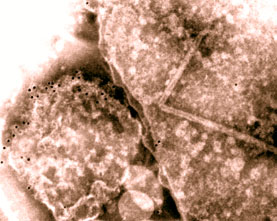Ralstonia metallidurans CH34 has been renamed to Cupriavidus metallidurans CH34 on this site on 8/2/06. Ralstonia metallidurans CH34, formerly Ralstonia eutropha and Alcaligenes eutrophus, is a gram-negative, non-spore forming bacillus that flourishes in millimolar concentrations of toxic heavy metals. Its optimal growth temperature is 30 çC. Although the reference strain, CH34, was first isolated in 1976 from the sludge of a zinc decantation tank in Belgium that was polluted with high concentrations of several heavy metals, it and other metal-resistant members of the genus Ralstonia are frequently found in sediments and soils with a high content of heavy metals from diverse geographical locations. A typical feature of these metal-resistant Ralstonia is the presence of one or two large megaplasmids which contain genes for multiple resistances to heavy metals. The reference strain, CH34, which was selected for its capacity to grow on minimal salt medium of low complexity containing cobalt, zinc, and cadmium ions, contains two large plasmids, pMOL28 (180 kb) and pMOL30 (240 kb). Together these plasmids confer resistance to Zn, Cd, Co, Pb, Cu, Hg , Ni and Cr. Both plasmids are low copy number and stably maintained even without selective pressure. They are self-transferable at low frequencies. The Minimal Inhibitory Concentration (MIC) for free, non-chelated Ni, Co, Zn and Cd are 2.5, 20, 12 and 2.5 mM, respectively for the reference strain. |
||
|
||
Cupriavidus metallidurans CH34

